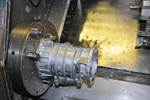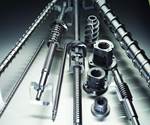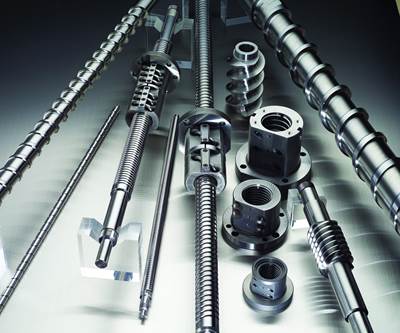The greatest expense in any manufacturing facility is time. Burden rates, combined with overhead machine rates, represent approximately 50 percent of manufacturing costs. This is probably not surprising, but despite this fact, many shops continue to place a disproportionate amount of focus on reducing tooling spend. In comparison to burden and overhead machine rates, tooling spend only represents a fraction of the manufacturing cost (4–5 percent). And when facilities do examine time savings, they often place the emphasis on machining cycle times.
One frequently overlooked time-killer is setup.
One frequently overlooked time-killer is that of setup. Setup is defined as the time it takes to get parts loaded and located and tools set with offsets that compensate for variables such as gage length, diameter and runout into the machine control. The old-school method of tool setup involves manually intensive operations, often using a multitude of different tools and methods of varying accuracy to extract desired measurements. On average, the time to set one tool using these types of methods is approximately five minutes. When shops employ methods such as feelers and test cuts to determine sizes, setting time can be much longer than the average five minutes per tool.
If setup moved at the incredible speed of three minutes per tool, the conservative cost to set up five machines over the course of a year is $189,000. If there are more machines, longer setup times, more shifts or more setups per machine in the same scenario, the cost will be significantly higher. This is the breakdown of cost for such a scenario:
- Setup time for 20-tool capacity machine = 1 hour (for a three-minute setup)
- Setup cost for five machines = $375 (for an average shop rate of $75 per hour)
- Shop rate combines average direct labor costs and overhead rates
- Setup time per year = 2,520 hours (assuming there are 252 working days per year)
- Setup cost per year (at 2 shifts and 1 setup per shift) = $189,000
Some may question why overhead rates are included in the shop-rate calculation, and the answer is opportunity cost. Whether the machine is running or sitting idle, it is costing a company money every minute. Therefore, for that company to accurately assign cost to time, it also must factor in items like rent, electricity, depreciation and support staff. Through this lens, a shop can get a true snapshot of the opportunity cost. In this case, the opportunity cost is the value or profit that a company forfeits when the machine sits idle for setup.
Set Up a Better Way
It is not possible to eliminate this idle time. But, shops can reduce it using tool presetters. High-quality tool presetters enable shops to take fast, accurate and repeatable measurements for each tool offline. This capability makes it possible for machinists to set tools while the machine is still running, which reduces idle time and increases cost efficiency in the shop. In addition to time and accuracy, the nature of presetting inherently promotes greater emphasis on best practices on ideal ways to store and measure tools. Toolboxes and drawers with random tooling ultimately migrate to more centralized tool-management areas.
The important attributes of a presetter are:
- Accuracy. In the era of Industry 4.0, presetters should be able to maintain repeatable measuring accuracy of 5 microns or better. This usually means that the system should be equipped with an optical measuring device, which is more accurate than physical contact (or indicator) devices.
- Repeatability. It is not just a function of measuring accuracy, but also of thermal stability. Presetters that use multiple material types in their base construction are more prone to non-uniform thermal expansion in the shop environment, which can require daily, repeated calibrations to output repeatable measurements.
- Capacity. Before making a purchase, shops should consider the size and weight of their largest tooling assembly. Here is where size matters, so shops want to be sure the machine can handle the maximum weight, height and diameter of the tools they need to measure.
- Ease of use. Adoption rates in the shop are key. The machine with the greatest capability in the world will end up being one of the largest paperweights in the world if no one can figure out and remember how to use it. When looking at functionality, examine the usability of the software, how many options and screens one has to look at to measure basic dimensions, and the overall ergonomics of the machine.
The important attributes of a presetter are accuracy, repeatability, capacity and ease of use.
Higher-end tool presetters will have various functionalities to automate and streamline tool-setting operations, including automatic adapter identification and autofocusing, fully automated tool measuring where the attendant literally just calls up the tool and presses “Go,” and automated data communication via integrated post-processing technology or RFID carrier systems. These systems eliminate errors associated with manual data input to the machine control (sometimes called “fat-fingering”), which reduces errors and decreases idle time.
Perhaps the most common misconception about tool presetters is that they are for large production facilities. The truth is that smaller shops need them more. A mold shop is an ideal candidate because a greater variety of jobs and tooling moves through its machines on a weekly basis than in larger production facilities. The frequency of constantly changing setups makes tool presetters in these environments highly cost-effective.
Also, for shops concerned with tooling costs, presetters represent a means to stabilize tool values such as runout. This helps identify and compensate for variances, which dramatically increases tool life. For mold shops using small-diameter tools in hardened steels, this capability can be of particular benefit.
Tool presetting represents a proven technology that can yield benefits of increased productivity, longer tool life, decreased scrap and greater process reliability for both small and large shops. As the fourth revolution in manufacturing—a digital revolution—continues to evolve, technologies such as tool presetting that enable digitization of manufacturing data will only increase in usage.
About the Contributor
Drew Strauchen
Drew Strauchen is vice president of Marketing and Business Development for Haimer USA.
Related Content
Moldmakers Deserve a Total Production Solution
Stability, spindle speed and software are essential consideration for your moldmaking machine tool.
Read MoreMaintaining a Wire EDM Machine
To achieve the ultimate capability and level of productivity from your wire EDM on a consistent, repeatable and reliable basis, regular maintenance is a required task.
Read MoreForces and Calculations Are Key to Sizing Core Pull Hydraulic Cylinders
To select the correct cylinder, consider both set and pull stroke positions and then calculate forces.
Read MorePlastic Prototypes Using Silicone Rubber Molds
How-to, step-by-step instructions that take you from making the master pattern to making the mold and casting the plastic parts.
Read MoreRead Next
Balancing Act
Lathe spindle balancing enables this shop to turn key features of castings rather than performing boring or facing operations on a mill.
Read MoreBallscrew Inspection Considerations
Ballscrews must be inspected for diameter, pitch, lead angle and potential drunkenness to avoid wear and to achieve the necessary tolerances and surface finishes in mold work.
Read MoreHow to Use Strategic Planning Tools, Data to Manage the Human Side of Business
Q&A with Marion Wells, MMT EAB member and founder of Human Asset Management.
Read More

















.jpg;maxWidth=300;quality=90)











